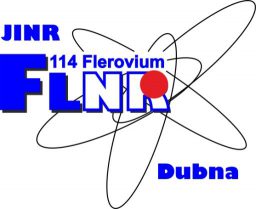Experimental Study of Mass and Total Kinetic Energy Distributions in Reactions Leading to Nobelium Isotopes/Investigation Of Heavy-ion induced collision reactions using CORSET Spectrometer.
22.05.2025 – FLNR Scientific Seminar, 15-30, FlerovLab Conference Hall
S. Sanila, FLNR JINR
(in connection with the election for the position of r.s.)
Experimental Study of Mass and Total Kinetic Energy Distributions in Reactions Leading to Nobelium Isotopes
The present work aims to investigate the characteristics of the mass–total kinetic energy (M–TKE) distribution of binary reaction products from the 40–48Ca + 208Pb reactions and to conduct a detailed examination of these reaction systems. Experiments were performed using the U400 cyclotron at the Flerov Laboratory of Nuclear Reactions, Dubna, Russia. Binary reaction products from 40Ca, 42Ca, 44Ca, and 48Ca projectiles on a 208Pb target were detected in coincidence using the double-arm time-of-flight (ToF-ToF) spectrometer CORSET.
In parallel, to explore the influence of compound nucleus angular momentum on M–TKE distributions of the 256No* compound nucleus, measurements were conducted for the 24Mg + 232Th reaction at four different laboratory energies ranging from 125 MeV to 181 MeV. Both the 24Mg + 232Th and 48Ca + 208Pb reactions lead to the formation of the 256No* compound nucleus, allowing for a comparative analysis. In the 24Mg + 232Th system, a detailed analysis revealed the dependence of mass variance on temperature and angular momentum, as well as the dependence of the variance of total kinetic energy distribution of fission fragments on angular momentum. Based on this, the contribution of non-compound nuclear fission processes in the 48Ca + 208Pb reaction was estimated, along with the corresponding probability of complete fusion fission processes.
Aniruddha Dey, FLNR JINR
(in connection with the election for the position of r.s.)
Investigation Of Heavy-ion induced collision reactions using CORSET Spectrometer.
In heavy-ion induced reactions, the interaction mechanism is primarily governed by the projectile
beam energy and angular momentum (L) of the composite system. Therefore, a series of experiments
were performed by utilizing the double-arm time-of-flight (TOF) CORSET spectrometer at the Flerov
Laboratory of Nuclear Reactions (FLNR), JINR, Russia, using energetic beams of 16O and 48Ca delivered
from the U400 cyclotron. The thin targets of 208Pb and 176Yb were bombarded with the 16O and 48Ca
beams, respectively at different beam energies to produce the fissioning nucleus, 224Th around the
barrier, to investigate the role of entrance channel angular momentum on fusion-fission and
quasifission reaction mechanisms. A detailed review work on the structural details of the 40-48Ca
isotopes has been carried out and will be presented during the seminar.
A section of the seminar will be dedicated to the future experimental prospects with CORSET setup
under the SCIF (System for Correlated Investigations of Fragments) project. Preliminary developmental
works carried out to couple neutron and gamma spectrometer to obtain a comprehensive study of
evaporation residues formation following heavy-ion collision reactions, will be discussed. With the
similar motivation to study the underlying reaction dynamics of heavy-ion collision reactions, our
group’s future experimental proposal in the Indian laboratory will be discussed. The new measurement
from the proposed experiment will allow to investigate the existence of an exotic fission mode in the
lighter-Thorium isotopes, and strengthen our previous understanding of the role of different shell
effects on the fission process in preactinides. Furthermore, the detailed results obtained during the
short-term research project based on ‘high resolution prompt gamma-ray spectroscopy’, under the
JINR INTEREST (INTErnational REmote Student Training) program under my supervision will also be
reported during the seminar.
